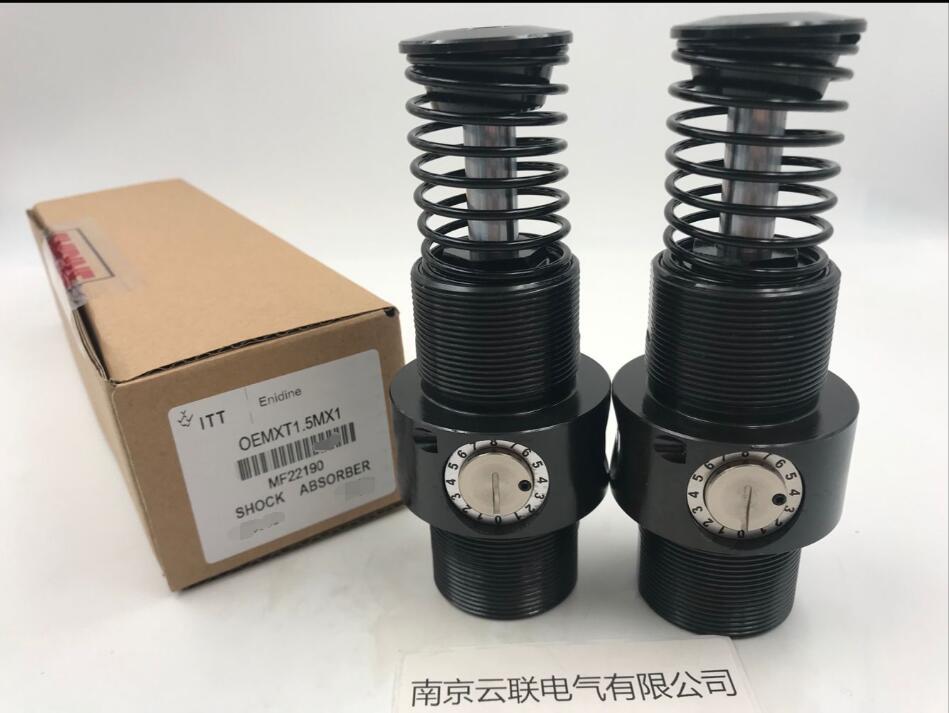
Telephone
025-52791167,52791168
13390905858
13390905858

Difference between Buffer and Damper
Buffer and damper play a crucial role in many fields such as mechanical engineering, building structures, and transportation. Although they share similarities in certain functions, there are significant differences in their working principles, application scenarios, and other aspects.
1、 Working principle
Buffer
Buffer mainly reduces impact and vibration by absorbing energy. It usually uses elastic materials or hydraulic, pneumatic and other methods to achieve energy absorption. When subjected to external impact, the buffer will undergo deformation or internal pressure changes, converting the impact energy into other forms of energy such as elastic potential energy, hydraulic energy, or pneumatic energy, which are stored and then slowly released to reduce the impact force and damage to the equipment.
For example, in car suspension systems, spring buffers utilize the elastic deformation of springs to absorb vibrations and impacts transmitted from the road surface. When the wheels encounter bumps, the spring is compressed, converting the impact energy into the elastic potential energy of the spring, and then gradually releasing it as the spring rebounds, keeping the vehicle relatively stable.
damper
Dampers control the speed and amplitude of motion by consuming energy. It usually uses friction, viscous liquids, or electromagnetic methods to generate damping force. When an object moves, the damper will apply a force opposite to the direction of motion, gradually converting the energy of the motion into other forms of energy such as thermal energy and frictional energy, which are consumed, thereby slowing down the speed and reducing the amplitude of the object’s motion.
For example, in the seismic design of high-rise buildings, hydraulic dampers utilize the viscous resistance of liquids to dissipate seismic energy. When an earthquake occurs, buildings will shake, and the piston in the hydraulic damper moves in the liquid. The viscous resistance of the liquid will exert damping force on the piston, gradually reducing the amplitude of the building’s shaking and protecting the structural safety of the building.
2、 Application scenarios
Buffer is widely used in various situations that require reducing impact and vibration. In the field of transportation, suspension systems and shock absorbers of vehicles such as cars, trains, and airplanes all use buffers to improve ride comfort and safety. In industrial production, buffers are often used in the transmission and conveying systems of various mechanical equipment to reduce equipment wear and damage.
For example, in the logistics industry, when the fork of a forklift descends, it generates a significant impact force. In order to protect the cargo and the structure of the forklift, hydraulic buffers are usually installed on the fork. When the fork descends and touches the ground or cargo, the hydraulic buffer absorbs the impact energy, causing the fork to slowly descend and avoid damage to the cargo and forklift.
damper
Dampers are mainly used in situations where control of motion speed and amplitude is required. In building structures, dampers are widely used in seismic and wind resistance fields to improve the stability and safety of buildings. In bridge engineering, dampers can reduce the vibration of bridges under the action of vehicle driving, wind loads, etc., and improve the service life of bridges. In mechanical engineering, dampers are often used to control the accuracy and stability of mechanical motion.
For example, in the roof structure of some large sports venues, large wind dampers are installed to prevent excessive shaking of the roof under strong winds. Wind dampers are usually composed of mass blocks and hydraulic damping systems. When the roof shakes under wind loads, the mass blocks will move in the opposite direction under the action of the hydraulic damping system, thereby consuming the energy of the wind load and reducing the amplitude of the roof shaking.
3、 Performance characteristics
Buffer
The main performance feature of a buffer is its ability to quickly absorb impact energy, reduce the intensity of impact, and minimize damage to equipment. It has a fast response speed and can be effective in a short period of time. However, the energy absorption capacity of the buffer is usually limited, and it may fail when subjected to excessive impact.
For example, some small spring buffers may experience excessive compression and loss of elasticity when subjected to high impact forces, rendering them unable to continue their buffering function.
damper
The main performance characteristics of dampers are the ability to continuously consume energy and control the speed and amplitude of motion. It has a long working time and can maintain a stable damping effect for a long time. However, the response speed of the damper is relatively slow and requires some time to take effect.
For example, in some high-precision mechanical equipment, electromagnetic dampers are used to ensure the accuracy and stability of motion. The response speed of electromagnetic dampers is relatively slow, but they can provide stable damping force to ensure the motion accuracy of mechanical equipment.

telephone:025-52791167,52791168
Fax:025-52791169
Phone :13390905858
mailbox:njxj888@163.com skype:yluedq
Address:Jiangning Shuanglong Avenue No.1222 Nanjing, Jiangsu. China P.O. 211100